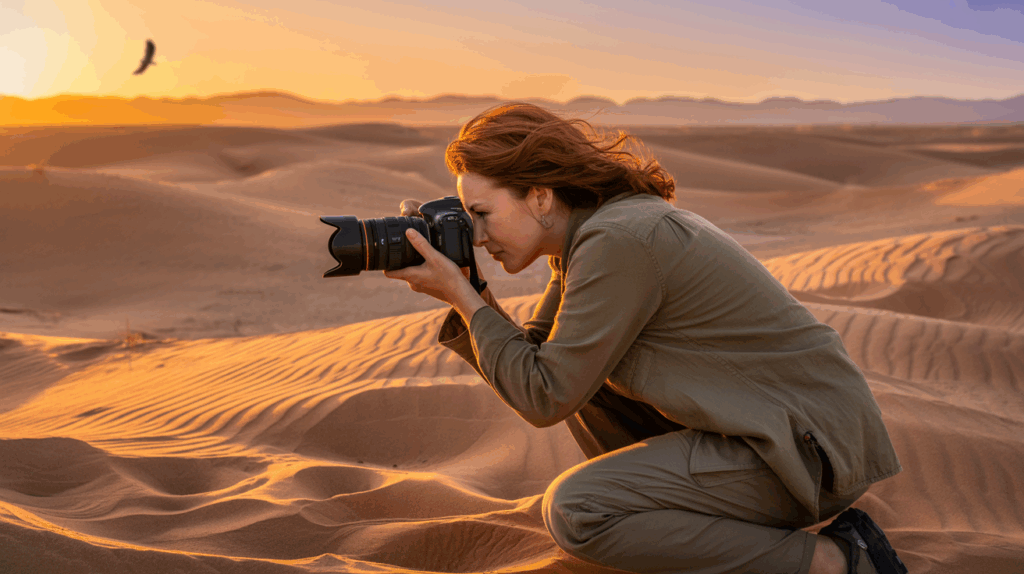Photography tips can make all the difference when you’re trying to capture the unique beauty of the desert. With its dramatic landscapes, ever-changing light, and rich colors, the desert offers endless opportunities for stunning photos. Whether you’re a beginner with a smartphone or an experienced photographer with professional gear, knowing how to approach desert photography will help you create images you’ll be proud to share.
1. Take Advantage of Golden Hour
The golden hour—the hour after sunrise and the hour before sunset—offers soft, warm light that enhances the desert’s natural colors. Shadows are longer, textures stand out, and the harsh midday glare is avoided. Plan your shoots around these times for the best lighting.
2. Use the Landscape to Create Depth
In the desert, wide-open spaces can sometimes make photos look flat. To add depth, include foreground elements like rocks, cacti, or footprints in the sand. Leading lines, such as trails or dry riverbeds, can draw the viewer’s eye into the frame.
3. Experiment with Different Angles
Don’t just shoot from eye level. Get low to emphasize interesting patterns in the sand or climb to a higher vantage point to capture sweeping panoramas. Changing your angle can completely transform your composition.
4. Capture the Details
While sweeping landscapes are stunning, the desert is also full of small, intricate details. Look for interesting textures, unique plant life, and patterns in rocks or sand. These close-up shots can add variety to your photo collection.
5. Prepare for Changing Conditions
Desert weather can be unpredictable. Sudden wind can kick up dust, and clouds can quickly change the lighting. Bring lens cleaning supplies, and be ready to adjust your camera settings for shifting conditions.
6. Incorporate People for Scale
The vastness of the desert is difficult to capture without a point of reference. Including a person in your shot can help convey the scale of the landscape and make the image more relatable.
7. Use a Tripod for Low Light
If you’re shooting at sunrise, sunset, or during the night, a tripod will help you keep your shots sharp without increasing ISO too much. This is especially important for night sky and astrophotography in the desert’s dark skies.
8. Try Night Photography
The desert is one of the best places for stargazing and night photography due to its low light pollution. Use a wide aperture, slow shutter speed, and a higher ISO to capture the Milky Way or constellations.
9. Protect Your Gear
Sand and dust can damage cameras and lenses. Use a protective filter, keep your gear in a sealed bag when not in use, and avoid changing lenses in windy conditions.
10. Tell a Story
The best photographs do more than just capture a scene—they tell a story. Think about the mood, the journey, and the experience you want to convey. Combine wide shots, close-ups, and action shots to create a narrative of your desert adventure.
Why Desert Photography Is So Rewarding

Photographing the desert challenges you to work with light, texture, and scale in creative ways. Each trip offers new conditions and subjects, ensuring that no two shoots are ever the same. With the right preparation and techniques, you can turn the desert’s rugged beauty into captivating images.
Plan Your Desert Photography Adventure
At Divine Desert Destination, we offer guided experiences that take you to the most photogenic spots in the desert at the best times of day. Whether you’re interested in capturing sweeping vistas, unique wildlife, or the night sky, we can help you plan a trip that matches your vision.
Contact us today to start planning your personalized desert photography experience.


Comments are closed.